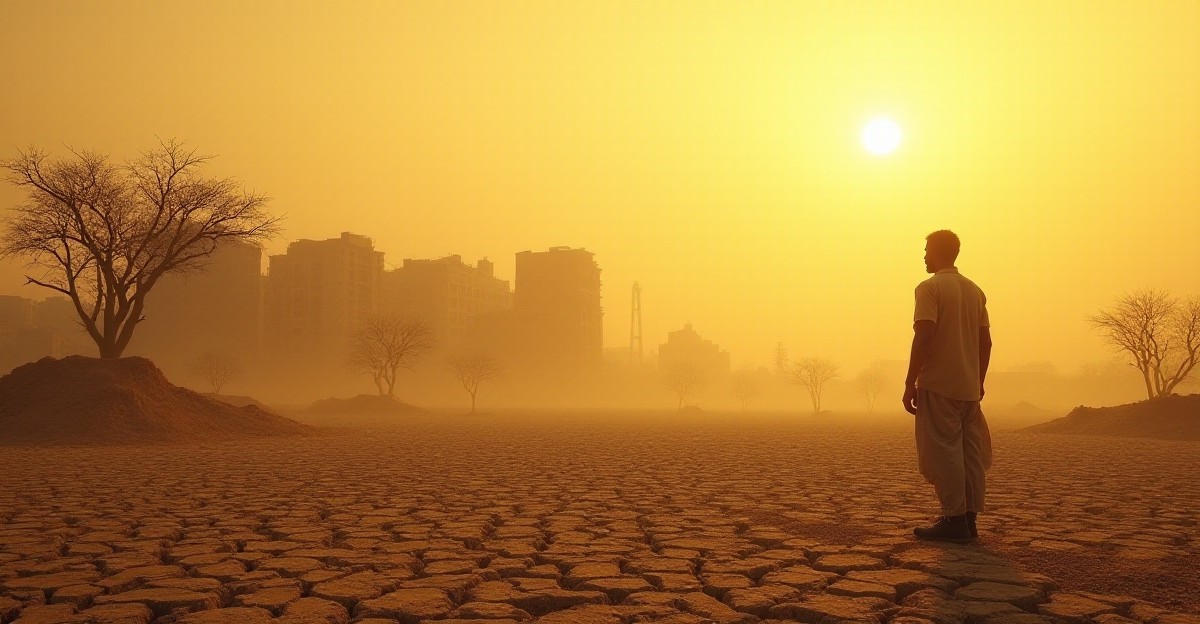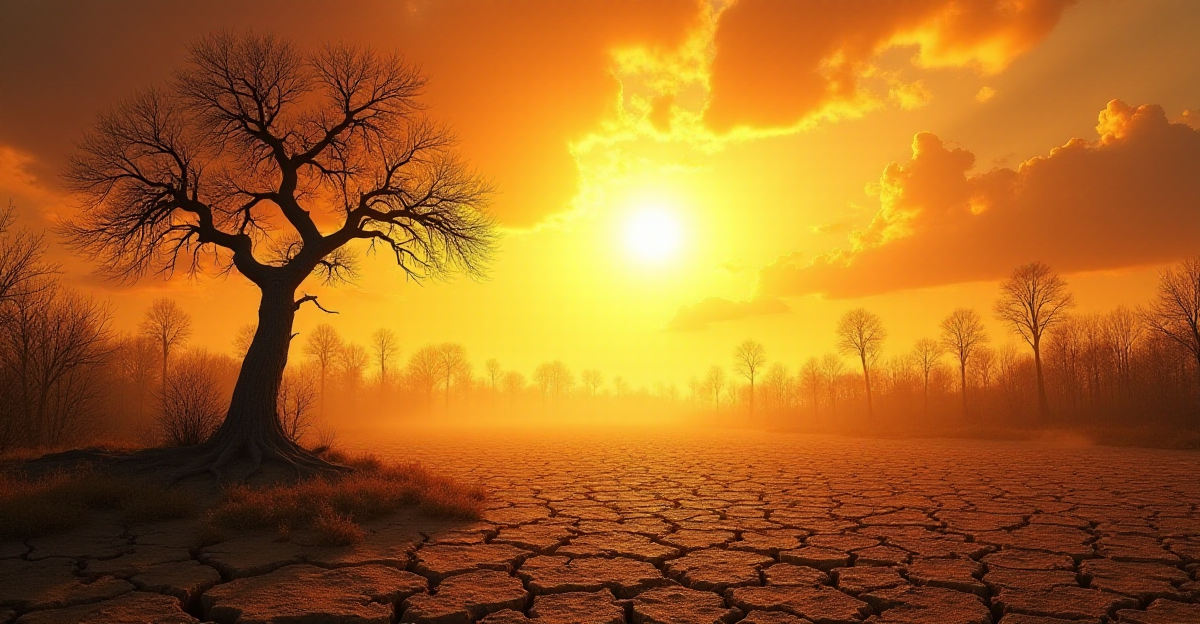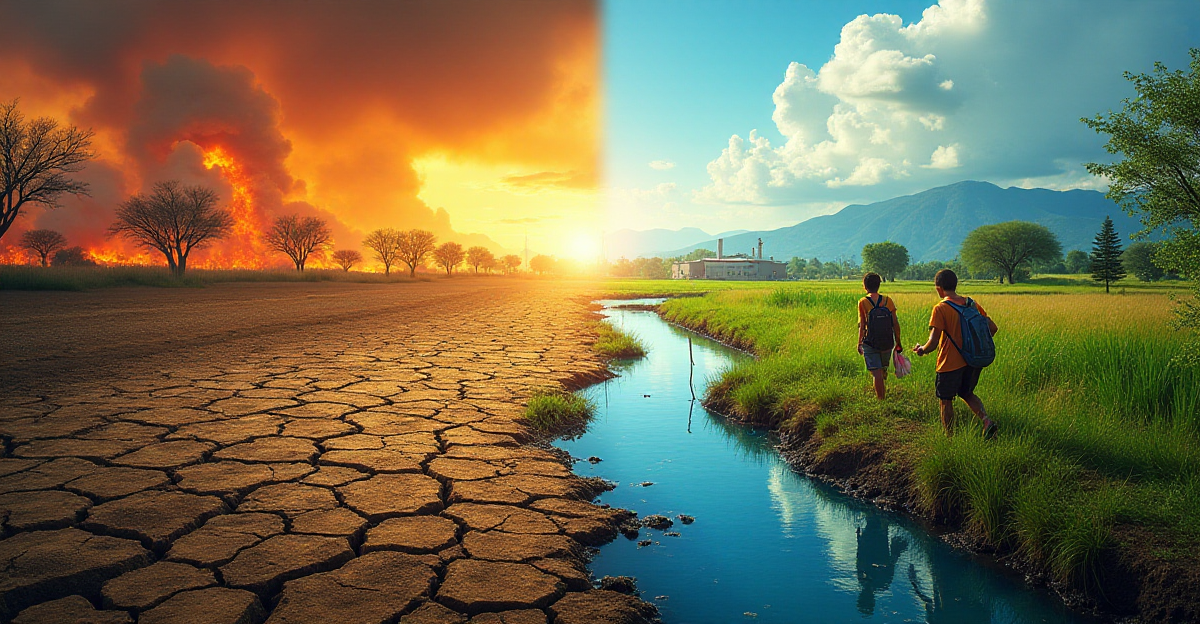While many believe low rainfall causes droughs, climate change is the main reason. Emphasizing results from climate science and environmental research, this paper investigates how increasing temperatures cause drier circumstances. By means of real-world examples, readers will grasp how climate change affects ecosystems and the required countermeasures. A personal insight will address an encounter with initiatives on water conservation.
Table of Contents
- Climate Change and the Growing Threat of Droughts
- Impact of Rising Temperatures on Ecosystems
- Steps for Reducing Climate Impact
- Extra’s:
Climate Change and the Growing Threat of Droughts

Have you ever given droughs and climate change any thought as related? Although many people consider droughs as being a lack of rainfall, the truth is significantly more complicated and worrying. A main cause of droughs, climate change increases their frequency and intensity. Grasping the real degree of its influence on our world depends on an awareness of this link.
One important component is global warming, which describes the average temperature rise on Earth. This warming trend accelerates the evaporation cycle, therefore causing drier soils and vegetation. More moisture held by warmer air can also cause erratic and changing patterns of rainfall. This mix of higher evaporation and uneven rainfall produces perfect circumstances for droughs to start and spread.
Droughs profoundly affect ecosystems as well as human life all around. Plants are greatly stressed by the lack of water supplies, which causes withering, mortality, and a loss of biodiversity. Animal populations suffer from this water shortage as well; they relocate, starve, or perhaps go extinct. From insects to bigger carnivores, these effects sweep across whole food webs. For instance, the California drought produced extensive forest die-offs, higher wildfire risk, and lower agricultural output.
Droughts: A Multifaceted Impact
It may surprise you to find that droughs have major social and financial effects as well. Mass migration, price increases, and food shortages can all follow from them. Furthermore, they could be harmful for human health since they lead to typhoid fever and cholera.
I recall seeing personally the terrible effects of a drought on nearby farms. Seeing fields wither and animals fight for water broke our hearts. This encounter made clear how important water conservation is to lessening the impact of drenches. By implementing sustainable habits including rainwater collecting and cutting our own water consumption, everyone of us can help.
Water Conservation: A Key to Resilience
Let’s look at some particular water-saving techniques you might apply. Water use can be drastically cut by installing low-flow showerheads and toilets, among water-efficient appliances. Another way you might help to reduce evaporation is by watering your garden in cooler hours. Additionally conserving valuable water resources is by addressing leaks quickly and shaving shorter showers. Every little action we do helps to increase our resistance to drought’s pressures.
Unquestionably, climate change and droughs are connected. We have to recognize the several effects of this phenomena and cooperate to identify environmentally friendly solutions covering its underlying causes. Giving “water conservation top priority,” funding climate science, and adjusting to a changing environment top importance would help to build a more resilient future for everybody.
Impact of Rising Temperatures on Ecosystems

You have ever noticed how much hotter the summers appear to be getting? Alternatively, how intense and apparently longer droughs seem to be? These are the physical consequences of climate change, a phenomena profoundly affecting our globe, not merely random weather events. Rising temperatures have one of the most concerning effects: more droughs, which are severely damaging ecosystems and human communities all around. Let’s explore more the intricate link among growing temperatures, droughs, and their effects on the environment on our earth.
Understanding the Connection: How Climate Change Fuels Droughts
You could be wondering how changing temperatures are influencing rainfall trends. Scientists have found, then, that rising droughs are mostly caused by global warming. The water cycle is upset as the average temperature of the Earth increases from the accumulation of greenhouse gasses in the atmosphere. This creates a vicious cycle whereby rising temperatures hasten evaporation, hence drying up soils and plants. Simultaneously, more moisture can be held by warmer air, which influences the erratic nature of rainfall. Droughs can start and spread from this mix of rising evaporation and uneven rainfall.
The Devastating Ripple Effect: Impacts on Ecosystems and Human Life
Rising temperatures seriously jeopardize the ecosystems of our world. Their great stress on ecosystems results in a drop in biodensity. Droughs have sometimes disastrous effects on plant life. Unable to get adequate water, plants wither and die, causing major forest die-offs and upsetting whole food systems. Animal populations suffer as a result of this water scarcity as well; they migrate, perish, or perhaps vanish.
You could be asking how this impacts us, then. Droughs, then, not only impact ecosystems but also have major social and financial ramifications for human communities. As people strive for more rich land and water supplies, droughs can cause food shortages, price increases for necessities, and even mass exodus.
Additionally bad for human health are droughs, which help typhoid fever and cholera to spread. Reading about the California drought reminds me sharply of the terrible effects of protracted dry seasons. Widespread forest die-offs, higher wildfire risk, and lower agricultural output brought on by the drought affected the livelihoods of innumerable people.
Developing sensible water conservation plans and reducing the environmental impact of climate change events depend on an awareness of the link between them and droughs. We must accept the complex character of this situation and act early to solve it so that the earth and we can have a more strong future.
Steps for Reducing Climate Impact

Have you ever observed how more often and with greater intensity droughs seem to be occurring? Although a lack of rainfall has some role, climate change is greatly aggravating these dry spells. Changing rainfall patterns brought on by climate change is prolonging drought spells. For ecosystems, water availability, and human populations these developments have major effects.
Understanding Climate Change and Droughts
Rising temperatures brought on by climate change are driving more evaporation and dryer soil conditions. These variations in rainfall together provide the ideal environment for extended droughs. These developments are influencing our life right now, not only theoretically. Imagine living in California, when wildfires endanger your house and the water supply is running low. For many Californians experiencing the continuous drought, driven in part by climate change, this is their terrible reality. Direct effects of these developments on communities have included economic hardship, water scarcity, and wildfires. Beyond California, the effects affect ecosystems and water availability, therefore influencing agriculture, water supply, and biodiversity all around.
Taking Action: Reducing Our Impact
Everybody has a part to contribute to lessen the consequences of climate change. These actions help us to fight droughs and safeguard our earth:
- Conserving Water: Water conservation is crucial to mitigating the effects of droughts. Install water-efficient appliances, fix leaks promptly, and water your garden during cooler hours to minimize evaporation.
- Embracing Sustainable Practices: Reducing our reliance on fossil fuels and adopting sustainable solutions like renewable energy sources, such as solar and wind power, are essential. Supporting businesses that prioritize environmental responsibility is another important step.
- Supporting Climate science Research: Climate science plays a vital role in understanding and addressing climate change. We can support research and development of clean technologies, renewable energy sources, and innovative solutions for mitigating the effects of climate change.
Still, it’s not only about personal deeds. To fight climate change and its consequences calls for group efforts. Imagine if everyone made little everyday adjustments like choosing sustainable goods and water conservation. Millions of people times these little deeds can have a big influence. Working together, we can build a more sustainable future, therefore lowering the environmental impact of climate change and safeguarding of our earth for next generations.
One can start changing things right now. How might you cut your environmental impact and save water? Simple actions like water conservation, environmentally friendly decisions, and support of climate science research help you to change things. Acting today will help us to build a better future for our earth and ourselves.
Extra’s:
If you are interested in the impact of climate change on the environment, you might also want to explore our post on “Can the Asian Caterpillar Fungus Be the Future of Cancer Treatment?“. This post dives into a potential solution to a major health crisis, and the connection to climate change adds another layer of complexity to the issue. Understanding how climate change affects our world in so many ways, from drought to disease, is crucial to developing solutions for a sustainable future. Additionally, if you are interested in the connection between the mind and body, “How Understanding the Mind-Body Connection Can Help Alleviate Pain” might provide some insights. This post explores the power of our thoughts and emotions to influence our physical well-being, another example of the interconnectedness of various aspects of our lives.
For further information on the connection between climate change and drought, you can explore “Impacts of climate change on drought and its consequences on the agricultural crop under worst-case scenario over the Godavari River Basin, India – ScienceDirect“. This scientific study provides detailed insights into the complex relationship between climate change and drought, focusing on a specific region in India. For a broader perspective on incorporating climate change considerations into drought management strategies, “Integration of climate change adaptation in drought and water conservation plans” offers a valuable resource. This report highlights the importance of proactive planning and adaptation measures in addressing the challenges posed by climate change and drought. Understanding the scientific evidence and practical strategies is essential for mitigating the risks of climate change and ensuring a sustainable future.












1 thought on “How Climate Change, Not Rainfall, Fuels Severe Droughts”